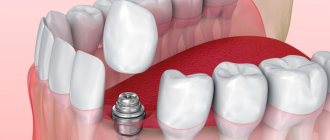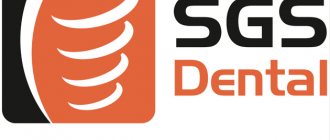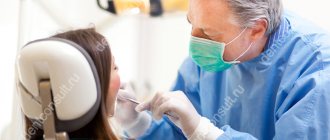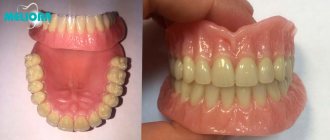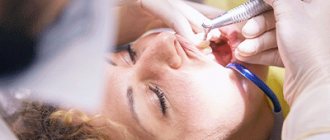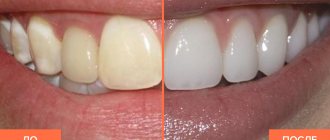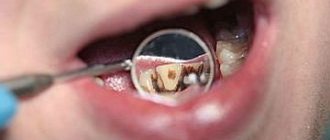Before surgery, it is necessary to carry out professional oral hygiene.
If the operation is performed with an anesthesiologist, you must come with an accompanying person, or the operation will be cancelled.
Recommendations for surgical treatment
After surgery, you may experience pain, which will go away as the tissue heals. Postoperative swelling or hematoma can also occur in areas adjacent to the surgical site, which is a natural consequence of surgery. There may be a slight increase in body temperature.
Please follow our recommendations!
Before surgery
- Prepare an ice pack at home.
- On the day of surgery, eat a light meal 2-3 hours before your scheduled time.
- The day before surgery, the consumption of alcoholic beverages is strictly prohibited.
- Be sure to inform your dentist about all the individual characteristics of your body and any allergic reactions, in order to accurately select an anesthetic that is safe for you.
- Visit the toilet before surgery.
- It is better to come to the operation in loose clothes without a collar.
Medical Internet conferences
The set of biological and mechanical processes occurring in tooth tissues during extraction is determined by biophysical properties.
Tooth extraction is a surgical operation during which, under the influence of a directed mechanical effect transmitted through the tooth to the periodontium using special instruments (forceps, elevators), a complete rupture of the ligamentous apparatus and deformation of the socket are achieved, allowing the tooth to be extracted (Lisenkov V.V., 1997). To dislocate teeth in the upper and lower jaw, forceps are used as levers. There are two types of levers (Bazikyana E.A., 2008):
I. A double-armed lever, called a lever of the first kind, is characterized by the fact that its shoulders are located on opposite sides of the fulcrum O. A small force F1 applied to the long arm of the lever BO can balance the large force F2 applied to the short arm of the lever AO. The magnitude of force F2 exceeds force F1 as many times as the length of arm BO exceeds the length of arm AO, i.e. F1/F2=AO/BO. In this case, the vectors of force F1 and force F2 have opposite directions
II. A single-arm lever, of the second kind, is characterized by the fact that both arms are on the same side of the fulcrum O, and the small arm AO forms, as it were, part of the large arm of the lever BO (Fig.b). The relatively small force F1 applied to the end of the large arm AO allows it to be transformed into force F2 with an increase in the transmitted force as many times as the length of the short arm AO exceeds the length of the large arm AO, i.e. F1/F2=AO/VO. In this case, the force vector F1 and force F2 have a one-way direction.
Elevators are also used as an independent and as an auxiliary tool for removing teeth with a destroyed crown, impacted and dystopic teeth.
I. With the help of a direct elevator, removal is carried out in several ways: the introduced action of the elevator acts as a wedge; reciprocating movements of the blade; action of the blade as a double-armed lever.
II. Each of the corner elevator designs has two options, differing in the direction of rotation of the instrument during tooth dislocation: clockwise or counterclockwise. Insertion of the instrument blade between the alveolar wall and the root by applying force to the handle along the longitudinal axis of the blade.
III. In cross-shaped elevators, the longitudinal axis of the handle and the intermediate part of the tool are located at a right angle or close to a right angle to each other. Such elevators are designed to remove lower molars, in particular the 3rd molar, especially with limited mouth opening (Soloviev M.M., 2013).
Thus, when using forceps and elevators, careful selection of methods for removing various groups of teeth is necessary in order to reduce the traumatic impact on the dentofacial segment.
After operation
— To avoid severe swelling and bleeding during the first 24 hours after surgery, it is necessary to apply an ice pack to the cheek on the side of the operation for 15-20 minutes with breaks of 30-40 minutes.
- Rinsing your mouth when bleeding is unacceptable!
— After sinus lift surgery, you should not drink through a straw, blow your nose vigorously, or puff out your cheeks.
- To reduce the likelihood of nosebleeds (after upper jaw surgery) and reduce post-operative swelling, you should sleep with your head elevated (add an extra pillow) for several days after surgery.
— It is not recommended to use tobacco products 1 week before and 2 weeks after surgery.
— It is prohibited to drive a car on the day of surgery with premedication.
- It is not recommended to eat until the anesthetic wears off. In the first days after surgery, it is recommended to eat soft, non-hot foods.
— It is not recommended to drink alcohol, coffee, or strong tea to avoid the negative effects of these drinks on blood circulation and wound healing.
Removal of a tooth
Tooth extraction is a surgical operation, the purpose of which is to remove a dental unit from the socket along with the root if it is impossible or impractical to preserve it. To facilitate the tolerability of medical procedures associated with this, the patient is usually given local anesthesia.
Indications
The list of indications for tooth extraction is quite wide and includes:
- destruction of the crown part of the tooth without the possibility of restoration;
- jaw tumors;
- tooth root fracture as a result of injury;
- purulent inflammation that has spread to bone tissue (diagnosed with osteomyelitis, periostitis);
- deep caries, which resulted in severe tooth destruction;
- obstruction of the root canals, complicated by inflammatory diseases;
- supernumerary teeth;
- dental units that constantly injure the tongue and mucous membranes, preventing normal speech, bite or eating;
- tooth mobility III-IV degree;
- dental units that interfere with orthodontic or orthopedic treatment.
Preparation
Preparatory measures begin with an X-ray examination, based on the results of which the doctor chooses the method of anesthesia and tooth extraction.
A few days before surgery, the patient must stop smoking, drinking alcohol and taking blood thinning medications. It is also not recommended to eat heavily on the eve of removal.
Progress of the operation
There are simple and complex tooth extractions. In the first case, the doctor extracts a unit of the dentition using forceps without any complications, in the second, it is necessary to resort to sawing it with a drill due to certain anatomical features (intertwined roots, delayed eruption, etc.). As a rule, the removal of wisdom teeth is difficult.
Recovery
Upon completion of the extraction procedure, the doctor checks the socket for the presence of bone fragments and applies a tampon. During the first day after surgery, the patient must follow a number of rules:
- You should not rinse your mouth, as this can lead to the blood clot being washed out of the socket, which will lead to unwanted inflammation and deterioration of the patient’s well-being;
- do not disturb the wound (do not chew on the side of the extracted tooth, touch the extraction site with your fingers or touch it with a toothbrush);
- eat only warm food and drinks, avoiding cold or hot.
Typically, recovery after tooth extraction takes 2 weeks. If necessary, the doctor prescribes anti-inflammatory, bactericidal and painkillers.
If the doctor's instructions are not followed after tooth extraction, complications may develop, including alveolitis.
Read more:
- Fear of the dentist
- What does a dental surgeon do?
Additional Tips
Avoid lifting heavy objects, bending over, playing sports, or taking hot baths for 5 to 7 days after surgery.
Within a few days, performance and the ability to drive may be reduced.
Remember to take medications prescribed by your dental surgeon after surgery.
We kindly ask you!
Appear for examination and removal of stitches 5-7 days after surgery, in agreement with your surgeon. You must immediately notify your surgeon or clinic administrator of any changes in your health.
Recommendations for caring for dental implants
The service life of the implant depends on:
- The correctness of the surgical and prosthetic stages carried out in the dental clinic.
- The patient's compliance with the recommendations given by the dentist immediately in the postoperative period and the period after implant prosthetics.
- Careful hygienic care of the “implant-crown” structure.
- Blood supply to bone tissue and gums in the area of implantation. (Smoking cigars and cigarettes has a very, very negative effect on peripheral blood circulation, which can even interfere with implant implantation.!!!)
Post-extraction sockets of single-rooted teeth: classification and restoration protocols
Currently, there are many clinical protocols that involve the extraction of functionally compromised teeth and their subsequent replacement with structures supported by dental implants. However, the predictability of each specific treatment algorithm is very variable, especially in the conditions of various defects of post-extraction sockets, so systematization of these would help to significantly optimize the process of selecting and arguing appropriate protocols for iatrogenic interventions during the complex rehabilitation of dental patients.
This article is a kind of road map, the purpose of which is to help practitioners correctly approach the choice of clinical manipulations during the restoration of sockets of single-rooted teeth. The classification proposed by the authors is unique, taking into account the volume of required intervention, the possibility of planning treatment and ensuring conditions for adequate wound healing after surgical extraction. In addition, this classification also takes into account the topographical features of the bone tissue in the area of the extraction sites, and the choice of treatment protocol is based on the biological principles of wound healing in the maxillofacial area. The rehabilitation protocol also consists of an analysis of the shape of the residual bone tissue, biotype and features of the positioning of the sockets on the upper and lower jaws. But for a general understanding of the whole problem, the first part of the article provides a description of those predisposing conditions and aspects that led to the creation of the above classification.
Relevance of the topic
The proposed classification is based on the condition of the bone tissue of the sockets: its presence and shape determine further manipulative aspects of treatment. The bone relief of the socket influences the further timing of implant installation and the choice of the necessary augmentation methods during complex rehabilitation. The concept of bone topography of the extraction socket includes parameters of the shape, contour and 3-dimensional structure of the residual ridge remaining after tooth extraction. In turn, all of the above parameters are determined by the shape of the alveolus apical to the extraction area, the level of bone in the interdental areas, the height, thickness and quality of the bone plate on the vestibular side. Each of these aspects of hard tissue affects the further outcome of socket restoration, and was taken into account in the process of creating the proposed author's classification.
Availability and quality of bone tissue
The shape and size of the bone tissue located apical to the area of tooth extraction, which represents the so-called apical bone topography parameter, play an important role in the further planning of immediate and delayed implantation procedures. To ensure adequate primary stability of intraosseous constructs, a minimum of 3–4 mm of intact supporting bone is required. In addition, if the tooth to be removed has a specific apical convexity, in the future this may somewhat complicate the healing process of the bone tissue before the implantation procedure. In such cases, to ensure the required position of the implant, it is simply impossible to do without additional surgical procedures (photo 2). More specifically, teeth with deficient apical topography significantly complicate the implementation of the implantation procedure according to any protocol, even in the conditions of the necessary bone augmentation of the socket. This situation often occurs after periapical dental pathologies or due to the specific anatomy of the bony alveoli. The level of interproximal bone affects the healing and support of soft tissues on the contact sides of the installed implant, since the presence or absence of an interdental papilla is determined precisely by the condition of the bone in the contact area between the supporting structures. Thus, the topography of the bone determines not only the functional, but also the aesthetic result of future complex treatment. In addition, the interproximal bone wall, together with the buccal and lingual components, directly influences the process of natural restoration of the socket, since a blood clot after extraction is formed precisely within the existing bone boundaries. Subsequently, it plays the role of a kind of frame that transforms into mature trabecular bone. Since the bone walls are the only support for the blood clot, their height directly affects the size of the formed framework, and, consequently, the final structure of the bone tissue.
The quality of the bone walls is another parameter that determines the morphology of the alveolar area after the extraction procedure. With thin bone parameters, its predominant cortical nature, or in the presence of digiscence, the risk of socket resorption after removal of compromised teeth increases significantly. Negative changes in socket size that occur after the extraction procedure can be compensated for through guided bone regeneration (GBR) performed immediately after the initial surgical procedure. The use of a bone substitute can also significantly reduce the loss of buccal bone plate volume, which is critical in terms of both functional and esthetic parameters.
Principles of restoration of periodontal defects
The treatment protocols described below for the restoration of extraction sockets used the same principles as for the restoration of periodontal defects, since these two types of alterations are very similar: the wound heals from the periphery to the center, and the extraction socket is nothing more than 4-walled defect. At the same time, with the loss of half the height of the buccal wall, the defect is transformed into a three-wall-and-a-half defect, and with complete reduction of one of the bone plates - into a full-fledged three-wall defect. It is logical that the smaller the number of bone walls, the lower the level of predictability of future surgical treatment. Not the least important parameters are the width of the existing bone boundaries, as well as their quality, based on which the authors systematized the defects into three different groups. Each of the treatment protocols for a specific group takes into account the possible prognosis of socket restoration with its consequences. The choice of bone graft material remains a dilemma for the practicing physician himself.
The main thing to remember is that such manipulations are aimed at retaining space, filling defects with progenitor cells and primary closure of the surgical wound. In addition, we should not forget that performing augmentation immediately after tooth extraction can provoke disharmonious disorders in the area of the mucogingival junction. Such discrepancy can be corrected through soft tissue repositioning or during the opening of implants to secure superstructures.
Thin and thick biotypes
The characteristics and quality of soft tissues have a significant impact on the final aesthetic and functional outcome of treatment, therefore, taking into account the patient’s tissue biotype is mandatory when planning future complex rehabilitation. Thick or thin tissue biotype determines how they cover the bone frame and how they respond to surgery. A thick biotype of gums is more tolerant of surgical interventions such as implantation or extraction; therefore, with such parameters of soft tissues, it is easier to prevent discoloration of the gingival profile and it is easier to ensure the restoration of the papillae and the volume of soft tissues around implant-supported restorations. In addition, the risk of recession as a result of surgical or mechanical manipulation in thick biotypes is almost minimized. It follows from this that the treatment algorithm for thick and thin biotypes should be different in order to achieve both aesthetic and functional treatment results. Thin gingival biotypes require more support to maintain the same level of contour and require a more conservative treatment approach given their susceptibility to the possibility of recession. Consequently, when developing surgical protocols, the influence of soft tissue biotype on the final treatment outcome is the subject of a long and careful analysis and provides the necessary criteria for predicting the possible outcomes of complex rehabilitation.
Atraumatic flapless technique
In all clinical cases, the treatment protocol provides for an atraumatic flapless approach with mandatory analysis of the parameters of the residual bone structure, features of the apical topography and the level of interproximal bone, as well as assessment of the biotype of soft tissues. Analysis of bone criteria is performed using the capabilities of radiographic research methods and modern cone-beam computed tomography immediately after extraction. An atraumatic approach to tooth extraction ensures maximum preservation of hard and soft tissue structure while maintaining an appropriate level of blood supply between the gum and buccal socket plate, which helps minimize the effect of hard tissue resorption. After determining the class of the hole and the biotype of the soft tissues, the doctor can begin to directly perform iatrogenic intervention. In specific cases, to compensate for bone deficiency, the doctor may resort to an orthodontic extrusion procedure before tooth extraction. In such situations, assessment of the area of future implantation should be carried out only after completion of the orthodontic phase of treatment. Evaluation of post-extraction sockets according to the proposed protocol will help clinicians to take a more reasoned approach to choosing the most appropriate treatment algorithm and achieve the most predicted rehabilitation results.
Classification and treatment protocol
Demonstration of parameters such as periodontal status, socket condition and the results of CBCT studies of single-rooted teeth are presented in photos 1-4.
Photo 1. Left. A clinical example of the procedure for removing the frontal 27 tooth of the lower jaw with further restoration of this area using an implant. Note the concavity of the alveolus in the apical region. Taking into account the features of the apical topography, a 2-stage implantation protocol was applied in this situation. When directly filling the hole with bone substitute material, the morphological features still did not allow the installation of a titanium infrastructure. During the treatment, a full flap was separated and a full procedure of guided bone regeneration was performed. On right. Note the newly formed bone level on the vestibular side and the new ridge morphology allowing for a dental implant procedure.
Photo 2. Left. An example of an adequate level of interproximal bone tissue. A healthy periodontal condition supported by bone tissue provides an adequate gingival profile. On right. Example of moderate bone resorption: The presence of residual bone provides sufficient soft tissue support.
Photo 3. Left. A Class I post-extraction socket with an intact vestibular plate that is no more than 25% resorbable. Center: Class II post-extraction socket with dehiscence and approximately 50% resorption of the buccal plate. On right. Class III postextraction socket with greater than 50% loss of vestibular bone plate.
Figure 4. Sagittal sections of postextraction sockets of class I (left), class II (center), and class III (right). Note the levels of the buccal plate relative to the cemento-enamel junction.
I class
Class I sockets are the most suitable for treatment. Alveoli with an intact buccal plate, an adequate level of interproximal bone tissue and sufficient apical topography parameters fall into this classification class. The intactness of the buccal plate is determined by the absence of cracks and discolourations in its structure, as well as the level of bone tissue reduction of no more than 25% (photo 4, left; photo 5, left). This percentage was chosen for evaluation based on the average root length of single-rooted teeth, which is 14.2 mm of the average volume of bone tissue that regenerates after immediate implant placement. Adequate apical topography provides such a volume of bone tissue that would provide retention of at least 3-4 mm of the dental implant (photo 2). As for the interproximal bone, its parameter is determined by the absence or moderate (up to 2 mm) level of bone mass reduction, while providing all the conditions for the necessary support of soft tissues and placement of the implant platform in the proper apical-coronal position relative to adjacent teeth, taking into account the position of the contact teeth sides (photo 3, left). Class I extraction sockets can be treated with immediate placement of implants with or without provisional restorations based on the stability of the infrastructure and the gap between the titanium screw and the alveolar wall to be filled with the graft.
II class
Class II sockets differ from Class I sockets in terms of the quantity and quality of the residual buccal plate. Class II alveoli are characterized by the presence of dihiscence or deficiency of the buccal wall at 25-50% of its height, but, like class I sockets, they have an adequate volume of interproximal bone tissue and sufficient parameters of apical topography (photo 3, left; photo 4, center, photo 5, center). If there is a thick gum biotype, direct implantation can be performed in class II sockets. In this case, it is not recommended to fix provisional restorations, and the residual defect around the infrastructure must be augmented and covered with an isolating membrane. With a thin biotype, it is better to give preference to a delayed implantation algorithm with all measures taken to preserve the volume of bone tissue in the tooth socket. When determining the topography of the extraction area on the upper jaw, to ensure an adequate aesthetic profile of the soft tissues, you can use the augmentation technique using a connective tissue rotated pedicle flap formed from the palate area. The position of the extraction area in the upper jaw makes it possible to carry out soft tissue augmentation around the installed titanium infrastructure, but when removing teeth in the lower jaw, it is best to adhere to a specifically delayed implantation algorithm. This conservative approach is recommended due to the occurrence of thin gum biotypes and an increased risk of recession. During wound closure by primary intention, there may be disruption in the mucogingival line around the titanium support, which can easily be corrected during reopening of the implants.
III class
Class III sockets represent the most complex clinical situations, characterized by insufficient apical topography, deficiency of interproximal bone tissue and reduction of the vestibular plate by more than 50%. In general, bone deficiency in the apical region can be caused either by a pathological periapical process or as a result of the anatomy of that part of the alveolus (Figure 4, right; Figure 5, right). The lack of approximal bone tissue is manifested by the level of its reduction exceeding 2 mm on one or both contact sides. Class III postextraction sockets can be roughly divided into those in which there is a bone deficiency at the apical site and those in which the crest level deficiency is located on the proximal side of the alveolus with or without the presence of a buccal plate defect. In case of inadequate apical topography, it is recommended to carry out bone augmentation according to the type of directed bone regeneration, followed by delayed installation of implants. With sufficient apical parameters and a deficiency of proximal bone, class III sockets, regardless of biotype, are restored in the same way as class II sockets with a thin biotype, that is, according to a delayed implantation protocol with appropriate augmentation measures. On the upper jaw, a rotated connective tissue flap from the palate can also be used; on the lower jaw, augmentation should be carried out with further delayed installation of titanium supports. In some cases, the clinician can use bone extrusion techniques to restore the parameters of interproximal bone tissue. Repeated analysis of the socket is carried out only after completion of orthodontic treatment, since the parameters of bone and soft tissues change significantly during the process.
conclusions
This article presents a unique classification with protocols adapted to it for the treatment of post-extraction sockets of single-rooted teeth using dental implants. The classification is based on an assessment of the initial parameters of the quantity and quality of bone tissue of the buccal plate, residual ridge in the interproximal areas, and also takes into account the features of the apical topography. Treatment protocols also involve analysis of the topography of the socket itself, the biotype of the soft tissues and the three-dimensional position of the alveoli. Grouping of holes occurs based on the percentage value of reduction of the buccal plate, taking into account other key parameters that help the doctor approach the choice of the necessary treatment algorithm in the most adequate and reasoned way. Of course, other treatment options for post-extraction sockets may be no less successful, but the choice of the proposed treatment protocols was based on their predictability and the biological principles of wound healing. Analysis of long-term results of maintaining bone tissue levels, as well as achieving appropriate aesthetic parameters of soft tissues remain a topic for further in-depth research. None of the methods proposed in the article are completely new or previously unknown; the authors only wanted to propose an appropriate protocol for choosing the most appropriate algorithm for iatrogenic intervention.
Authors: Edgard El Chaar, DDS, MS Sarah Oshman, DMD Pooria Fallah Abed, DDS
Oral hygiene
Regardless of the size or number of implants, they must be cared for as if they were regular teeth. Brush and floss your dental implants twice a day. Use special fluffy dental floss (for example, Oral-B superfloss or ultrafloss).
When brushing your teeth, pay special attention to the back teeth and between teeth. Use a soft or medium-hard brush. In addition, use an irrigator for additional deep cleaning of the interdental spaces with water irrigation.
There are special brushes that can be used to clean interdental spaces - dental brushes. Ask your dentist about them - in some cases they are not recommended.
Visit your dental hygienist twice a year; they are the only ones who can clean your implants as thoroughly as necessary. Regular visits to the dentist are very important. Your dentist will check the condition of your gums, jaws and implants.
Smoking is bad for your health and for dental implants, too. To have a good prognosis for the lifespan of your implants, it would be a good idea if you stopped smoking.
Eating
Avoid chewing hard candy, ice, or other hard foods (such as hard chocolate or dry fish) as they may loosen or break the abutment screw.
Avoid foods such as caramel or toffee, as they may stick to the crown and cause the abutment screw to loosen.
Do not open bottles or crack nuts with your teeth for the same reasons.
Wear protective sports mouth guards when participating in sports and avoid direct blows to the face.
Refrain from grinding your teeth. If creaking occurs unintentionally or during sleep (bruxism), notify your dentist and he will make you a thin night guard.
The length of their service depends on the quality and regularity of care for implants.
Before and after implantation
Before surgery:
Prepare several days off after the date of the planned operation.
Do not smoke or reduce the number of cigarettes you smoke.
If you are sick on the eve of the operation, please notify the implantologist.
Ask your implantologist about the medications you will need immediately after surgery.
Patients suffering from compensated diabetes mellitus must follow a strict diet 2 weeks before surgery and 2 weeks after it.
Get a good night's sleep the night before surgery.
Make sure you are accompanied if you plan to undergo anesthesia, sedation or a complex operation, do not plan to be behind the wheel.
If you have herpetic rashes on the mucous membrane, the operation should be rescheduled.
Wisdom tooth removal process:
- anesthesia,
- ensuring access (in the case of an embedded wisdom tooth, the doctor cuts the gum and removes the area of bone tissue located above this tooth),
- dividing the wisdom tooth into parts if removal is difficult using dental burs,
- suturing the area of the extracted tooth. Some types of threads used to make sutures subsequently dissolve on their own, and the doctor removes the sutures that do not dissolve. The process of removing them is very simple and painless.
Surgical dentistry is not always useful, since in any case you lose a tooth, but very often the question is not about usefulness, but about necessity. If you experience pain or suspect that there are prerequisites for tooth extraction, contact the Arcadia network of dental clinics! Our specialists care, it’s really important for them to see a smile on your face: not only to relieve pain, but also, if possible, to keep your teeth intact!
After operation:
If you have had dental implants, you may experience some of the typical discomforts associated with any type of dental surgery. These may include:
- Swelling of the gums and face.
- Gum injury.
- Mobility of adjacent teeth.
- Pain at the implantation site.
- Minor bleeding.
- Bruises and bruises.
You may need painkillers and antibiotics. Follow the recommendations of the implantologist.
What must be observed after implantation:
- Brush your teeth with a soft brush before removing sutures
- Eat soft foods for 5-7 days. Do not eat hot, spicy or salty foods.
- Starting from the third day after surgery until the sutures are removed, you should rinse your mouth with a chlorhexidine solution twice a day (after brushing your teeth).
- Do not overheat in the sun or in a sauna.
- Do not engage in active sports.
- Do not smoke or reduce the number of cigarettes you smoke.
- Do not fly on an airplane, do not swim, do not dive for 2 weeks (especially important after sinus lift surgery).
- Do not blow your nose or sneeze with your mouth open (especially important after sinus lift surgery).
- If swelling, discomfort or other symptoms increase within a few days after surgery, or the temperature rises, contact your implant surgeon.
- After tooth extraction
- If you have had a tooth removed, you must take care of your oral cavity. By following certain recommendations, you will feel better and healing time will speed up.
The actual procedure
Removing a tooth in the lower jaw is carried out using special forceps, which allow you to simultaneously expose it (push back the gum tissue) and fix the instrument. The procedure can be performed in two ways - either by rotation (literally “twisting”), or by loosening. Moreover, loosening occurs only according to the “palate-to-cheek” pattern - this will make it possible to destroy the socket, weaken the tooth and easily pull it out. Please note: if a patient is diagnosed with increased sensitivity of teeth, the treatment of which is already being carried out, then adjacent teeth can be removed, but only using the loosening technique. This is due to the inadmissibility of injury to a hypersensitive tooth.
Stopping bleeding:
To control bleeding, it is necessary to bite down on a gauze pad placed by the dentist in the oral cavity. The pressure promotes the formation of a blood clot in the socket. If you have heavy bleeding that has not stopped within an hour of tooth extraction, you should bite into a regular tea bag. Tannin in tea helps in the formation of blood clots. Hold the tampon or tea bag until the bleeding stops.
Additionally, cool the extraction area, apply a cold compress to the face in the area of tooth extraction for 10-15 minutes. at one o'clock. A slight bleeding on the first day after removal is normal.
Surgical dentistry: removal of wisdom teeth
In dentistry, removal of wisdom teeth is the most common operation that is not associated with destruction of the tissues of the latter. Wisdom teeth appear on average from 16 to 25 years, but they may not erupt at all, remaining in their infancy throughout their entire lives.
— definitions of surgical dentistry : there are four wisdom teeth in the oral cavity, one on each jaw on the right and left.
- erupted is a tooth that has protruded at least partially above the gum level
- Teeth that have not fully erupted and have not taken their place in the dentition are called submerged. The most common reason for this phenomenon is lack of space or incorrect tilt.
According to the direction of immersion, wisdom teeth are divided into 4 types:
- the medial one is inclined forward, towards the front teeth,
- distal - tilted back,
- horizontal,
- vertical.
“Bone immersion” occurs when a tooth remains deep in the jaw without ever appearing on the surface. If it went through the bone, but did not completely cut through the gum, then this is already “tissue immersion.”

